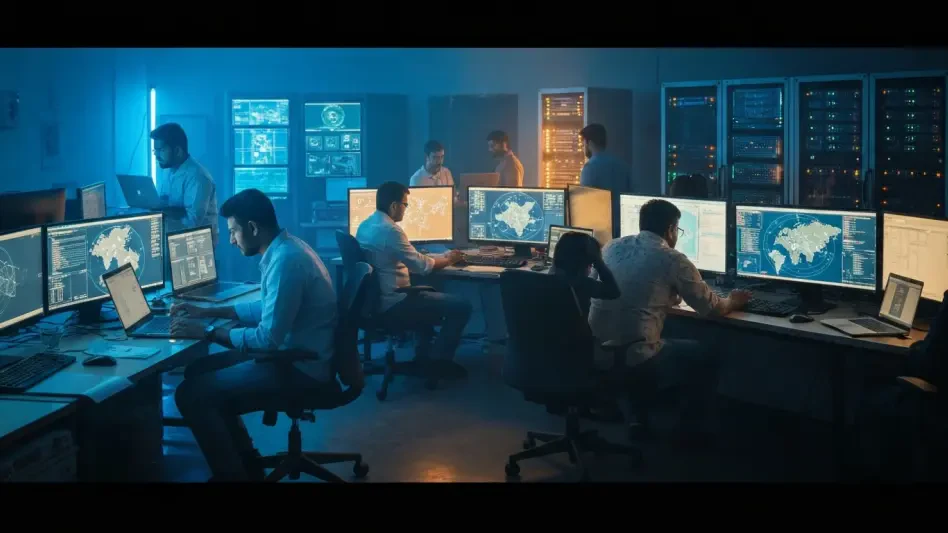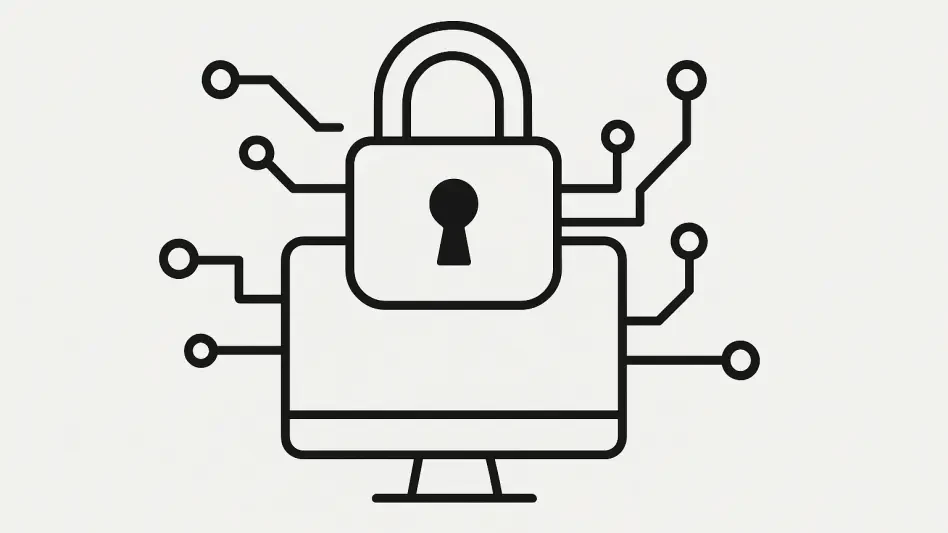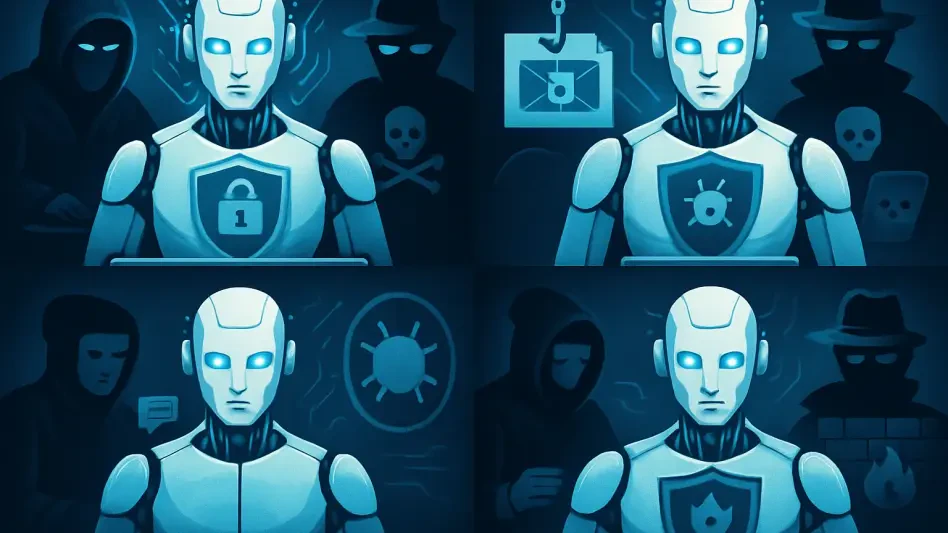The recent advisory issued by the Government of Samoa highlights the critical cyber threat posed by APT40, a state-sponsored hacking group widely recognized for its sophisticated cyber operations. The Samoa National Computer Emergency Response Team (SamCERT), working in collaboration with partner countries, has closely monitored the activities of APT40, which poses significant risks to networks within the Blue Pacific region. This advisory reiterates the importance of bolstering cybersecurity measures to mitigate potential damages from this threat actor.
The Emergence of APT40
APT40’s Background and Attribution
APT40, attributed to the People’s Republic of China (PRC), has a history of targeting government systems and critical infrastructure globally. Known for its advanced cyber capabilities, the group has previously focused on countries like the U.S. and Australia. Current intelligence and observations from SamCERT indicate that APT40 is now shifting its focus towards the sensitive networks managed by Pacific Island nations. This transition underscores the evolving threat landscape and necessitates immediate action to safeguard these vulnerable networks. As a state-sponsored entity, APT40 operates with significant resources and backing, making their operations highly structured and potent.
The group’s modus operandi involves sophisticated cyber techniques often devised to compromise the security of government and critical infrastructure systems. Learning from past operations, APT40 leverages knowledge of cybersecurity defenses and refines its methodologies to penetrate even well-protected networks. This is particularly concerning for smaller nations with fewer resources to dedicate to cybersecurity defenses, emphasizing the urgency of international cooperation and proactive cybersecurity measures to deter and mitigate potential attacks.
Historical Targets and Operations
APT40 has been involved in numerous high-profile cyber incidents, targeting a range of sectors including government, defense, and critical infrastructure. Their operations are characterized by meticulous planning and execution, often involving prolonged reconnaissance phases. The group’s ability to adapt and evolve its tactics makes it a formidable adversary in the cyber domain. Historical records show that APT40’s methods include deploying advanced persistent threats that maintain long-term access to sensitive systems, thereby allowing for ongoing data extraction and monitoring.
One notable characteristic of APT40 operations is their adaptive approach to cybersecurity defenses, taking measures to evolve in response to detection and mitigation efforts. This adaptation often involves the use of fileless malware and leveraging legitimate system processes to avoid triggering security alerts. Additionally, APT40’s focus on exploiting small-office/home-office (SOHO) equipment adds another layer of complexity, as these devices are commonly less fortified and frequently overlooked as security vulnerabilities.
Sophisticated Tactics and Techniques
Advanced Cyber Capabilities
The advisory emphasizes the crucial partnership between Samoa and its allies, highlighting a collective effort to strengthen cybersecurity across the Pacific region. It acknowledges the comprehensive report published by the Australian Signals Directorate’s Australian Cyber Security Centre (ASD’s ACSC) in July, which detailed APT40’s cyber activities and the ongoing threat to Australian networks. The group’s tactics involve performing regular reconnaissance on target networks, compromising small-office/home-office (SOHO) equipment, and conducting attacks that mimic legitimate traffic, making detection a significant challenge for network defenders. Such tactics emphasize the need for persistent vigilance and enhanced security measures.
APT40’s advanced capabilities include the use of innovative software and hardware techniques to bypass traditional security measures. For instance, leveraging fileless malware, this group has been able to operate stealthily, avoiding conventional detection methods that rely on file scans. Their strategic approach to infiltrating networks underscores the sophistication and persistence that defines their operations, underscoring the importance of regular monitoring and the adoption of advanced security protocols.
Stealthy Operations and Evasion Techniques
SamCERT’s analysis of APT40 activities reveals the use of advanced techniques such as fileless malware and registry loading techniques previously unseen. These methodologies allow APT40 to conduct stealthy operations, avoiding traditional detection methods. Furthermore, SamCERT observed the deployment of secondary loaders—modified commodity malware that ensures persistent access to compromised networks. This strategic use of malware facilitates the exfiltration of sensitive data from the targeted networks in the Blue Pacific. The ability to operate unnoticed in these networks poses a serious threat to the confidentiality, integrity, and availability of critical information.
The deployment of secondary loaders and other sophisticated techniques highlights APT40’s capability to maintain long-term access to compromised environments. These methodologies involve modifying legitimate software components to avoid raising suspicion during malware execution. Additionally, the use of encryption to protect communication channels between the malware and its command-and-control infrastructure adds another layer of complexity for detection efforts. Understanding these sophisticated techniques is essential for any organization aiming to fortify its defenses against such advanced threats.
Persistent Threats and Network Infiltration
Evasion and Persistence Mechanisms
The advisory underscores the sophisticated nature of APT40’s operations. By leveraging side-loading malicious DLL files and using legitimate programs to execute malware, APT40 effectively evades detection. The group also employs registry modifications and ‘living off the land’ techniques, utilizing common administrative tools to maneuver within networks. Persistence mechanisms include creating scheduled tasks and using modified malware to establish remote access and command-and-control capabilities. These actions enable the group to stage and exfiltrate data through modified reverse proxies, thereby obscuring network traffic. This capability to blend in with legitimate network activity makes traditional detection and response efforts particularly challenging.
Persistence mechanisms such as scheduled tasks and registry modifications are integral to maintaining ongoing access to a compromised system. By using these methods, APT40 ensures that its operations can continue even after initial compromises are discovered and addressed. The use of legitimate programs and common administrative tools to execute their malicious activities further complicates detection by mimicking normal network behavior. These tactics underscore the necessity for advanced cybersecurity solutions that can detect and respond to such subtle and persistent threats.
Lateral Movement and Obfuscation
APT40’s lateral movement tactics are particularly concerning as they focus on reconnaissance and network mapping to identify high-value targets. To further evade detection, the group executes malware in memory and employs a range of obfuscation techniques, including timestamping, software packing, log deletion, and masquerading. These actions complicate efforts to identify and mitigate the threat, underscoring the need for robust and comprehensive cybersecurity measures. The ability to move laterally within a network allows APT40 to expand its infiltration and reach more sensitive data, increasing the potential impact of their operations.
Efforts to obfuscate their activities are designed to delay detection and response, making it more difficult for cybersecurity teams to track their movements and counteract their impact. By altering timestamps, packing software to hide its true nature, and deleting logs, APT40 can ensure that their activities remain undetected for longer periods, thereby increasing the overall effectiveness of their operations. These methods of evasion and lateral movement emphasize the sophistication of APT40 and the critical need for continuous improvement in cybersecurity practices.
Proactive Measures and Recommendations
Enhancing Security Posture
In its advisory, SamCERT urges organizations and government ministries to take proactive steps to assess their exposure to APT40 and enhance their security posture. This includes conducting systematic threat hunting across their environments to identify potential evidence of APT40 activity and ensuring that appropriate logging is enabled to support investigation efforts. Organizations are encouraged to collaborate with SamCERT to facilitate this process and ensure adequate protection against the threat. By identifying vulnerabilities early and deploying effective countermeasures, organizations can significantly reduce their risk exposure.
Implementing comprehensive security measures and continuous monitoring strategies are crucial for detecting and mitigating sophisticated threats like APT40. Establishing robust logging practices and regularly reviewing these logs can aid in recognizing anomalous behavior indicative of a compromise. Proactive threat hunting should be an ongoing process, coupled with educating staff about the latest threat landscapes and how to recognize signs of potential cyber intrusions. Collaboration with cybersecurity experts, including those at SamCERT, can enhance organizational defenses and provide timely intervention in case of suspected APT40 activity.
Patching and Incident Response
Furthermore, it is essential to review the patching status of critical assets, including endpoints and firewalls, to prevent APT40 from infiltrating the environment. Performing vulnerability scans to identify and address key weaknesses within the infrastructure is also a crucial step in enhancing security. Updating incident response plans to prepare for advanced cyber incidents is vital to ensure readiness in the face of sophisticated cyber threats. Regular testing and revision of these plans ensure that they remain effective against evolving cyber tactics employed by groups like APT40.
Ensuring that all systems are up-to-date with the latest security patches helps close vulnerabilities that could be exploited by cyber attackers. It is also important to maintain an updated inventory of all organizational assets and implement strict access controls to minimize the attack surface. Conducting regular vulnerability scans and penetration testing can identify and mitigate potential security weaknesses. Moreover, an effective incident response plan should outline clear steps and responsibilities for detecting, containing, eradicating, and recovering from cyber incidents, thus ensuring a swift and organized response to any potential breaches.
International Collaboration and Ongoing Efforts
Global Cybersecurity Initiatives
The advisory from Samoa aligns with recent actions by the U.S. Department of Homeland Security (DHS), which issued a bulletin warning about the potential exploitation of internet-connected cameras manufactured in China. The DHS bulletin highlighted concerns about the lack of data encryption and secure configuration settings in these cameras, making them vulnerable to cyber threats. The continued communication with manufacturers by default adds to the risk of unauthorized data access and surveillance. This highlights the broader global issue of securing IoT devices and the need for stringent cybersecurity measures at all levels.
International collaboration is essential to address the cross-border nature of cyber threats. Initiatives like those by the DHS emphasize the need for countries to work together and share intelligence on cyber threats and mitigation strategies. This global approach helps in building a united front against cyber adversaries like APT40, ensuring that responses are coordinated and resources and information are shared effectively. The recognition of common vulnerabilities and collective efforts to strengthen infrastructure security are critical in maintaining robust defenses against sophisticated cyber threats.
Collective Defense Strategies
The Government of Samoa recently issued an advisory concerning the severe cyber threat posed by APT40, a state-sponsored hacking group known for its advanced cyber operations. This announcement underscores the critical need for enhanced cybersecurity measures. APT40 has been closely monitored by the Samoa National Computer Emergency Response Team (SamCERT), in cooperation with partner nations. Their activities present substantial risks to networks in the Blue Pacific area. The advisory serves as a reminder of the importance of strengthening cybersecurity protocols to protect against possible harm from this sophisticated threat actor. To enhance cybersecurity, organizations should continually update and patch their systems, undergo regular penetration testing, employ robust antivirus and malware detection tools, conduct frequent security audits, and provide comprehensive cybersecurity training for employees. By taking these steps, it’s possible to mitigate the risks posed by APT40 and other cyber threats, protecting valuable data and maintaining network integrity.








